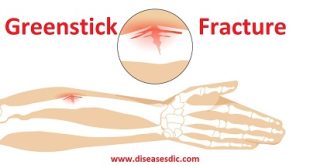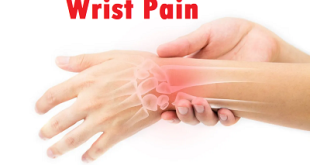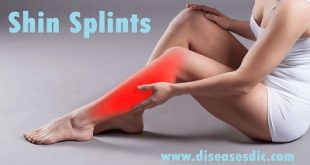About Panner’s Disease
Panner’s disease involves the growth plate in the elbow (growth plates produce new bone tissue and determine the final length and shape of bones in adulthood). The disease occurs in kids who are younger than age 10, typically young athletes and usually affect the dominant arm.
The child begins to complain of pain during activity. The pain eases with rest. Over a period of one to two years, the bone slowly rebuilds itself. During this time, symptoms gradually disappear, although the elbow may never fully straighten out.
Panner’s disease is similar to osteochondritis dissecans, a condition that occurs after the skeleton is done growing. Both conditions are most common among certain young athletes, especially baseball pitchers and gymnasts.
Epidemiology of panner’s disease
Panner disease is typically seen in children (5-10 years of age), although it is also seen in throwers due to repeated trauma. Panner disease occurs in a younger age group than osteochondritis dissecans which typically occurs in teenagers.
Pathophysiology – panner’s disease
Panner Disease affects the elbow of the arm. At the elbow, the humerus meets the ulna and the radius. The humerus is the long bone that runs from the shoulder to the elbow, and the ulna and radius are the two bones that make up the forearm. The capitellum is the rounded knob on the end of the humerus and it is held by the radius due to the radius’s cup-like shape. Panner Disease is part of a family of bone development diseases known as osteochondrosis. In osteochondrosis, the blood supply to an area of developing bone in the dominant elbow is temporarily disrupted by something that is not yet well understood. Therefore, the tissues in the bone are not getting enough blood and they begin to go through necrosis, and they begin to die. Normally, bones grow by the expansion and uniting of the growth plates, but osteochondrosis disrupts this process and the result is cell death and the loss of newly formed tissue.
The death of the tissues eventually leads to deterioration of the bone’s growth plate. The bone’s growth plate is defined as the area at the end of a developing bone where cartilage cells change into bone cells. The bone tissue does regrow, but the necrosis can cause temporary problems in the affected area until the strenuous arm and elbow activity is significantly decreased or stopped for a period of time.
Causes and risk factors
To understand what causes Panner’s disease, it’s helpful to understand the anatomy of the arm. At the elbow, the humerus (the long bone that extends from the shoulder to the elbow in the upper arm) meets the two bones that make up the forearm, the ulna, and the radius. The rounded knob on the end of the humerus, the capitellum, fits into the head of the radius, which is shaped like a cup and holds the capitellum.
During childhood, rapid bone growth occurs. However, the blood supply to these areas of bone growth sometimes gets disrupted. Panner’s disease results when the blood supply to the entire capitellum is disrupted. When the cells within the growth plate of the capitellum die, the surrounding bone softens and collapses, causing the knob of the capitellum to become flat.
Because bones normally undergo a continuous rebuilding process, old cells are reabsorbed into the bone and new cells begin to form within and rebuild the growth plate within a period of weeks or months. Eventually, through a process called remodeling, they return the capitellum to its normal round shape.
Doctors do not fully understand why some kids get Panner’s disease, but many believe that the disease is hereditary. It generally seems to be brought on by repetitive overuse of the elbow that puts pressure on and strains the elbow during this period of rapid bone growth. Such overuse can result from participation in activities that involve throwing or putting strong pressure on the joints, such as baseball and gymnastics. Then these repeated mild traumas cause the area to become swollen and irritated, which causes pain.
Signs and Symptoms
The main sign of Panner’s disease is dull, aching elbow pain around the outside part of the elbow, near the capitellum. The pain generally worsens with activity, such as throwing a ball and becomes better with rest.
Kids may also experience:
- Swelling
- Stiffness
- Tenderness
- Inability to fully straighten the elbow
- Inability to fully turn the arm around (known as pronation and supination)
Symptoms usually begin unexpectedly and cannot be attributed to any specific event or injury. They may last for several weeks to several months.
Complications of panner’s disease
Short term complications include nonunion/nonhealing of the OCD lesion, hardware removal if pin fixation used, and loose body damage throughout the elbow. Long term complication includes osteoarthritis.
Complications from elbow arthroscopy approach 10% including neurologic injuries both permanent and transient, hematoma, fistula, arthrofibrosis, reflex sympathetic dystrophy, and heterotopic ossification.
Diagnosis of panner’s disease
How do doctors identify the problem?
The doctor will want to know the child’s age, activity level, and which arm is dominant. In the physical exam, the sore elbow and healthy elbow will be compared. The doctor checks for tenderness by pressing on and around the elbow. The amount of movement in each elbow is measured. The doctor checks for pain when the forearm is rotated and when the elbow is bent and straightened.
X-rays are needed to confirm the diagnosis. X-rays let doctors see the shape of the capitellum. An elbow X-ray may show an irregular surface on the capitellum. The entire growth plate may appear fragmented and transparent. Transparent areas mean that the bone that makes up the capitellum has been absorbed. The capitellum may appear flattened out, which means that the bone has collapsed. Within a period of one to two years, an X-ray comparison will usually show that the capitellum has completely grown back to its normal shape in patients with Panner’s disease.
Occasionally, a magnetic resonance imaging (MRI) scan may show more detail. The MRI can give a better view of bone irregularities. The MRI can also detect swelling.
Treatment for panner’s disease
Nonsurgical Treatment
In some cases of Panner’s disease, children may need to stop sports activities for a short time. This gets the pain and inflammation under control. Usually, children don’t need to avoid sports for long.
Sometimes, the passing of time may be all that is needed. It takes one to two years for the growth plate that makes up the capitellum to grow into solid bone. At this point, pain and symptoms usually go away completely.
The doctor may prescribe anti-inflammatory medicine to help reduce pain and swelling. Physical therapy treatment may also be recommended.
In severe cases, when regular treatment is not effective, doctors may recommend that the child wear a long-arm splint or cast for three to four weeks. The goal is to stop the elbow from moving so that inflammation and pain go away.
Surgery
The symptoms of Panner’s disease usually disappear when the growth plate in the capitellum finishes growing. Surgery is not generally an option for Panner’s disease.
Rehabilitation
What should I expect from treatment?
Nonsurgical Rehabilitation
In nonsurgical rehabilitation, the goal is to reduce pain and inflammation. Nonsurgical treatment can help ease symptoms of Panner’s disease. Some doctors have their patients work with a physical therapist. Treatments such as heat, ice, and ultrasound may be used to ease pain and swelling.
Therapists also work with young athletes to help them improve their form and reduce strain on the elbow during sports. When symptoms are especially bad, patients may need to avoid activities that make their pain worse, including sports.
Symptoms from Panner’s disease tend to go away slowly over time. This means that nonsurgical rehabilitation doesn’t really cure the problem. Treatments can only help by giving short-term relief from symptoms.
Returning to Sports & Activities after Panner Disease
The goal is to return your child to their sport as quickly and safely as possible. If your child returns to sports or activities too soon or pushes through pain, the injury may worsen, which could lead to pain and difficulty with sports. Your child’s physician will give the go-ahead to return to sports when your child is no longer having significant pain and the elbow can bend and straighten normally.
Prognosis
The natural history of the disease means that there is usually resolution in 1-2 years. There is usually a complete resolution of symptoms but, in some, there may be a persistent loss of elbow extension. Symptoms may resolve before the radiology returns to normal.
 Diseases Treatments Dictionary This is complete solution to read all diseases treatments Which covers Prevention, Causes, Symptoms, Medical Terms, Drugs, Prescription, Natural Remedies with cures and Treatments. Most of the common diseases were listed in names, split with categories.
Diseases Treatments Dictionary This is complete solution to read all diseases treatments Which covers Prevention, Causes, Symptoms, Medical Terms, Drugs, Prescription, Natural Remedies with cures and Treatments. Most of the common diseases were listed in names, split with categories.








I have a continious pain at arm joint as clearly indicated by red colour on the picture.
Kindly contact a doctor for a better diagnosis of your problem.
A painless lump in the elbow joint without any problem in regular activities.
Elbow (olecranon) bursitis occurs when the fluid-filled sac, or bursa, at the tip of the elbow becomes inflamed. Often, the first sign of bursitis is swelling at the tip. Please visit your nearest physician for immediate diagnosis and treatment.